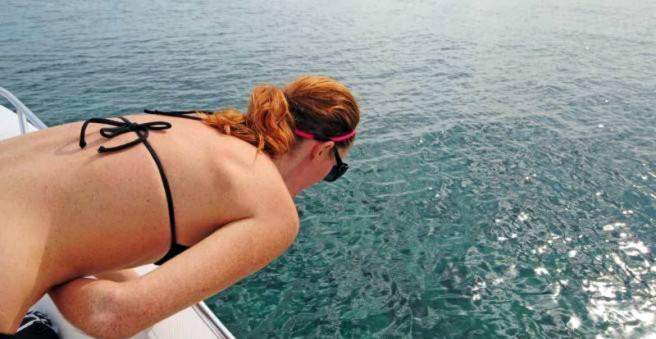Seasickness is a common form of travel sickness (kinetosis). Those affected develop typical symptoms such as headache, dizziness, nausea, and nausea while traveling on a ship or other watercraft – they become seasick. The seasickness can be different pronounced. Here’s what exactly happens with seasickness and how you can protect yourself.

How is seasickness caused?
For thousands of years people have been going to sea – and almost as old as the seafaring itself are the first stories about seasickness. When travelers hang their torso over the railing and vomit, experienced sailors talk smirking about “feeding the fish.” But where does seasickness come from?
As with general travel and motion sickness, various sensory impressions are in conflict with seasickness. The vestibular apparatus perceives rotational movements as well as horizontal and vertical acceleration with tiny hair cells in its individual partial organs. The so-called proprioceptors send information about which muscle is currently moving; They help the brain, for example, to permanently locate the exact position of the arms and legs. The visual perception is also very important – that is, what the human being sees with his eyes in order to orient himself.
Contradictory sensory impressions
On the high seas, it is often the case that the visible environment – such as the planks of a sailboat or the walls inside a larger steamer – appear straight and you are actually sitting or standing stably. Due to the constant rocking movements in rough seas, however, the organ of balance perceives that the body is constantly in motion and tilts. This provides conflicting information that the brain can not classify.
Many people initially respond to this with fatigue, mild headaches and frequent yawning. Often, the salivation increases and those affected start to sweat. Only then are the classic symptoms of seasickness: dizziness, nausea and vomiting. In extreme cases, the sea patient becomes completely apathetic or his circulation collapses. This is very rare.
How to prevent seasickness?
Although, in principle, every person can get seasick once: Some are more prone to seasickness than others, and more sensitive to the rocking movements. At first you can not do much against this predisposition – women are often seasick faster than men, children more often than adults, migraine sufferers more often than healthy people. Often, even after a few hours or days at sea, the malaise settles on its own. But there are also some things you can do yourself:
If you notice that you are feeling slightly uncomfortable or noticeably tired, it is best to go on deck and direct your gaze to the horizon. The alignment of the eyes will help your brain reconcile visual impressions and perceived fluctuations. The sooner you react to an uncomfortable feeling, the better.
If this does not help, it’s best to lie flat and close your eyes, which is usually better under deck. It does not matter if you fall asleep. On the contrary: In sleep, the sense of balance is largely “disabled” and most seasick feel better after waking up.
Food and medicines for seasickness
A completely empty stomach is as unfavorable in seasickness as a very full one. Make sure that you eat a snack that is not too heavy in the stomach despite nausea before and, if necessary, during the trip. Very greasy and exotic foods are less suitable – they could make the nausea even worse. In addition, a connection between seasickness and histamine is discussed. Histamine plays a role as a signaling agent in the body and is also present in long-matured foods, such as hard cheese, salami and red wine. Thus, it could be useful for people with seasickness to avoid these foods before and during a sea voyage. However, there is no secured evidence for this yet.
There are also some medicines available to help prevent seasickness – the various active ingredients are available, for example, in the form of patches, tablets and suppositories. Which medication is suitable depends, among other things, on age, intensity of seasickness and individual predisposition. It is best to seek advice from your doctor or pharmacist and use the medication in good time before embarking on the voyage.
However, if your first voyage is to cruise on a big steamer, you usually do not have to worry: these ships are so big and sturdy today, and equipped with special stabilizers that they barely move even in rough seas. As a result, only a few people experience one on a cruise seasickness.